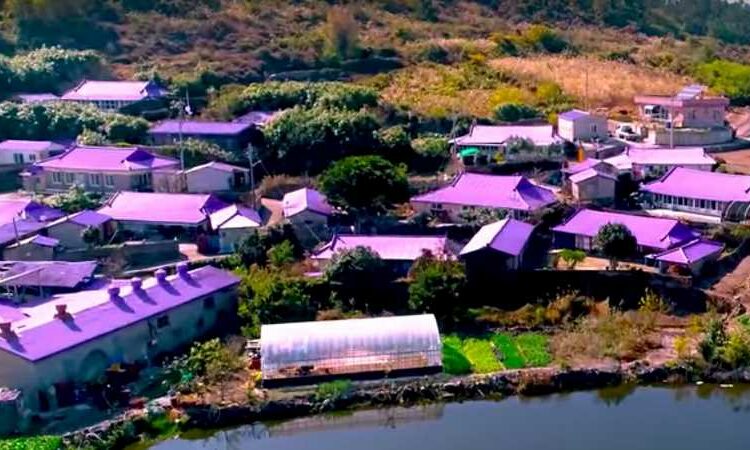On an island off the southwestern coast of South Korea, native bellflowers called campanula paint the scenery in a soothing lilac shade. So, Banwol Island decided to take a cue from the natural scenery and literally paint the town purple.
Now known as "the purple island," the remote destination has about 400 buildings with roofs coated in pastel purple paint, as well as old-school telephone boxes and a large bridge linking it to neighboring Bakji Island in the same hue.
The project was conceived in 2015 when the South Jeolla Province wanted to "create attractive island destinations," CNN reported. Together, Banwol and Bakji Islands have a combined population of only about 150, much of which works in farming.
To boost the purple branding, the government also turned to planting, adding 30,000 New England asters, a wildflower in the matching shade, as well as more than 230,000 square feet of lavender fields. A restaurant on each island, a cafe, a hotel, and bike rentals were also added to make the islands more tourist-friendly — and it has worked, especially for local tourism during the pandemic.
Since South Koreans need to go through a 14-day quarantine if they leave the country, the purple island, which is about six hours by bus or car from Seoul, has provided a relatively new destination to visit within its borders. From June through August of last year, more than 100,000 visited, which was 20% more than the previous year — and more than 490,000 have been there since 2018, according to CNN.
The idea of painting cities in colorful shades has long been a tradition, perhaps the best known being the blue city of Chefchaouen, Morocco. Both India's Jodhpur and Spain's Júzcar are also painted blue, while Mexico's Izamal is known for its yellow hue.
South Korea has found new ways of boosting domestic tourism, even during the pandemic, like with "The Wave" outdoor installation in Seoul, which debuted last May.
Source: Read Full Article

